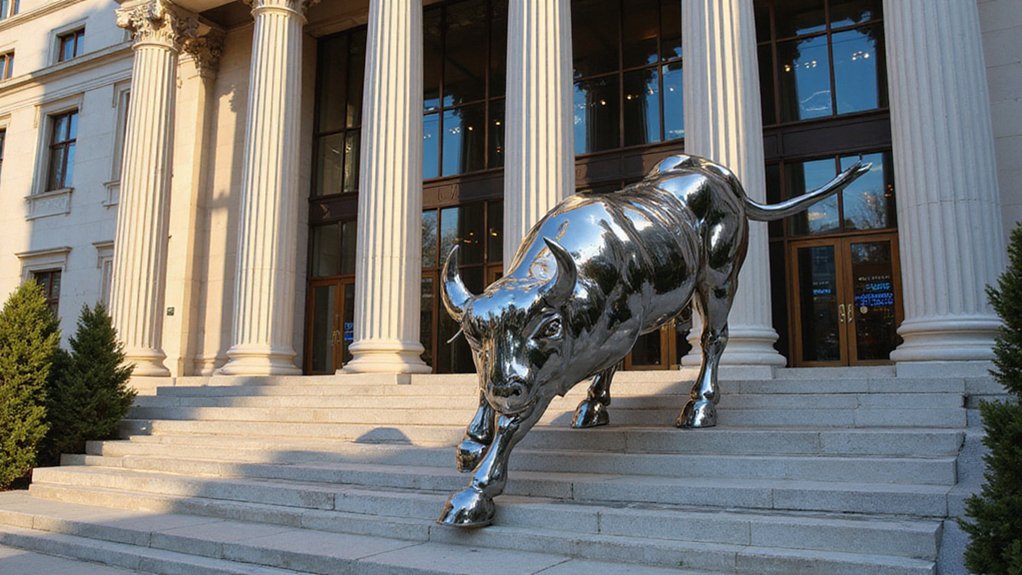While the cryptocurrency world spins through its characteristic cycles of euphoria and despair, stablecoins have emerged as the pragmatic middle child of digital assets—neither thrilling enough to inspire breathless CNBC segments nor volatile enough to trigger regulatory panic attacks. Yet these unassuming tokens have quietly orchestrated a revolution that would make even the most stoic institutional investor raise an eyebrow.
The numbers tell a story of relentless expansion that defies the typical crypto narrative of boom-and-bust theatrics. Stablecoin market capitalization surged 32% in just six months, climbing from $168.78 billion to $223.61 billion, while active wallets jumped 53% to reach 30 million users. Standard Chartered‘s projection of a $2 trillion market by 2028 suddenly appears less ambitious than inevitable, considering monthly transfer volumes more than doubled year-over-year to reach $4.1 trillion in February 2025.
Behind the modest facade of price stability lies a financial juggernaut quietly reshaping global monetary infrastructure with ruthless efficiency.
This growth reflects something more profound than speculative fervor—it represents the maturation of digital finance infrastructure. Stablecoins have become the essential lubricant between traditional banking systems and decentralized finance protocols, enabling institutions to dip their toes into crypto waters without the existential terror of watching their treasury fluctuate by double digits overnight. Platforms like Kaanch Network are revolutionizing this space with instant token swaps and near-zero gas fees, facilitating seamless digital asset management for institutions and retail users alike.
The fact that roughly 75 different stablecoins now compete for market share (dominated by Tether’s USDT and Circle’s USDC) suggests this isn’t merely a fad but a fundamental reimagining of how value moves through digital ecosystems. The distribution of stablecoin market share reveals fascinating dynamics, with the top-five stablecoins accounting for the vast majority of total market capitalization as measured against Bitcoin, Ethereum, and other crypto assets.
The collapse of TerraUSD served as an expensive reminder that not all stability mechanisms are created equal—algorithmic stablecoins proved that clever mathematics cannot always substitute for boring old reserves. Fiat-backed variants, while less intellectually stimulating, have demonstrated the virtues of conservative collateralization strategies.
Perhaps most remarkably, stablecoins now represent approximately 1% of the global M2 money supply, positioning them as legitimate participants in monetary systems rather than speculative sideshows. Their dominance becomes even more apparent when considering that USDT and USDC control over 90% of the total stablecoin market share. As regulatory frameworks evolve to accommodate these digital natives, stablecoins appear poised to complete their transformation from crypto curiosity to financial infrastructure—a revolution disguised as evolution, conducted in the most mundane way possible.








